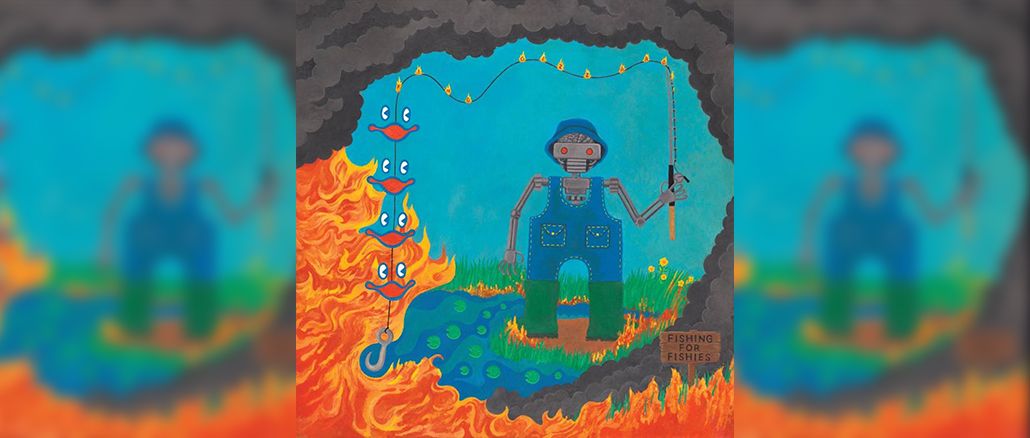Not much pops out on King Gizzard’s ‘Fishing for Fishies’

King Gizzard & the Lizard Wizard
Fishing for Fishies
Flightless Records · April 26, 2019
When one steps into the gizzverse, you never know what you’re gonna get. After the prolific five-album-in-a-year 2017, King Gizzard and the Lizard Wizard took 2018 off and then released their 14th studio record, Fishing for Fishies, in 2019. With King Gizzard, the style of any forthcoming record is always up in the air. Known more for the harder garage rock part of their discography, they can still cook up some fine indie pop folk albums, such as my personal favorite of theirs, 2015’s Paper Mache Dream Balloon. With this latest record, they had the time to piece together a pleasing 42 minutes of nicely paced folk-boogie. Despite this, the album can sometimes get a little tiring as it lacks diversity in its melodies and instrumentation.
When the singles first came out, they all seemed to have different tastes and it was difficult to imagine how they were going to all piece together. From the pop-folk opener “Fishing with Fishies,” all the way to the last track and lead single “Cyboogie”, I was excited to see what they could pack in between. The result was an album that is spent piecing together transitions between tracks that constantly shift from style to style, but still stick relatively close to their previous efforts in the folk-pop genre. The only track that threw me off guard stylistically was “Acarine,” which seems to serve exclusively as a way to transition from the main bulk of the album to the final track. The song is an anomaly to the rest of the album, featuring groovy synth loops It reminds me a lot of “Any Colour You Like” off Pink Floyd’s 1973 album Dark Side of The Moon in purpose and in sound. This track really shows how they can use their versatile styles to make the album pop more as a whole.
One non-single on the album that consistently caught my attention was “Real’s Not Real.” This song perfectly blends the styles of King Gizzard’s past efforts along with their great talent in creating a poppy melody. This song almost has more instrumental diversity in its 3.5 minute running then the whole rest of the album. The great mix between the hard-cutting distorted guitars to the glissful bass and harmony driven verses, that is followed by a great guitar and harmonica jam at the end, shows what King Gizzard can do with their versatility. Other than this track, the only other one that I can remember standing out after numerous listens was “This Thing.” This track has a groovy and catchy chorus, but it suffers from a lack of experimentation and sticks to the same harmonica riffs that the band has used so many times in the past. “This Thing” just needed maybe to cut out some parts for more style mixing like in “Real’s Not Real” and it could have been a real King Gizzard stand out across their discography with how great its bridge and chorus mixing is.
Overall, King Gizzard stick to their roots on this album to create a groovy, well paced album. The cost comes in the form of a lack of experimentation. The singles from this record got me excited to see where they would explore in their wide range of styles and style mixing they have done in the past, but instead they just made a more updated version of their past pop folk albums. Though a pleasant listen all the way through, not much pops out. With all that said, this album is one of their best overall efforts and it gets me excited for their next venture, whether it comes in two months or two years.